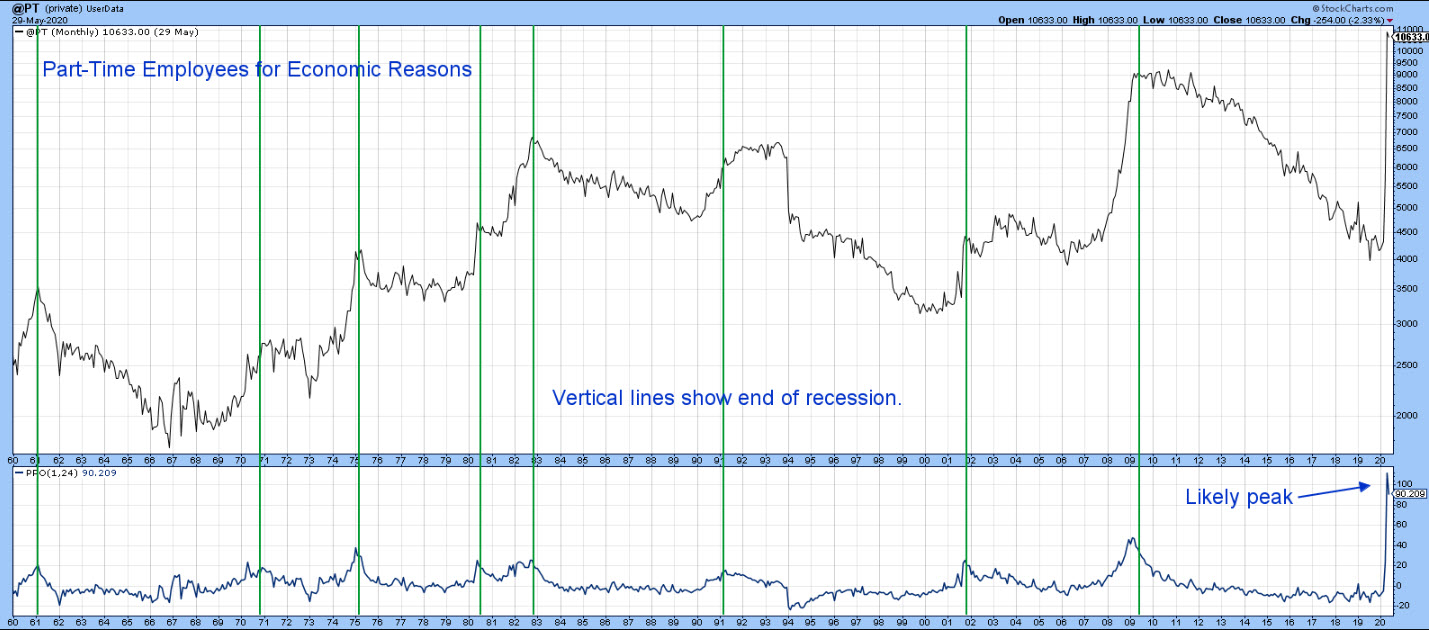Part-Time Employees for Economic Reasons is a leading indicator of the labor market. That's because employers are more inclined to hire and fire temporary workers than permanent ones, where labor laws, contracts, pensions and other impediments get in the way. This indicator has been consistently useful in identifying the start and ending of recessions. Like most economic indicators, it offered a recessionary signal earlier this year, but only after the horse had left the barn. Black swan events like COVID-19 are not very helpful in the forecasting business!
Pretty well most economists have agreed that the (not yet officially declared) 2020 recession will be a short one, based on the idea that it was artificially induced and could be artificially re-started again. However, the May jobs report caught everyone off-guard by its fortitude, strongly suggesting that the recession is over.

The green lines in the chart represent the end of previous recessions; you can see that they consistently correspond with peaks in the PPO. Recent economic activity caused the oscillator to rally to a record reading, but May data resulted in a down tick. It's not yet a decisive reversal, but logic suggests that it will be. After all, we have seen record amounts of monetary and fiscal stimulus thrown at the economy. In addition, the re-opening process from the artificial shutdown has only just begun. Finally, the forward-looking stock market, having crossed its 12-month MA, offers further testimony in favor of the good times to come.
Good luck and good charting,
Martin J. Pring
The views expressed in this article are those of the author and do not necessarily reflect the position or opinion of Pring Turner Capital Group of Walnut Creek or its affiliates.






